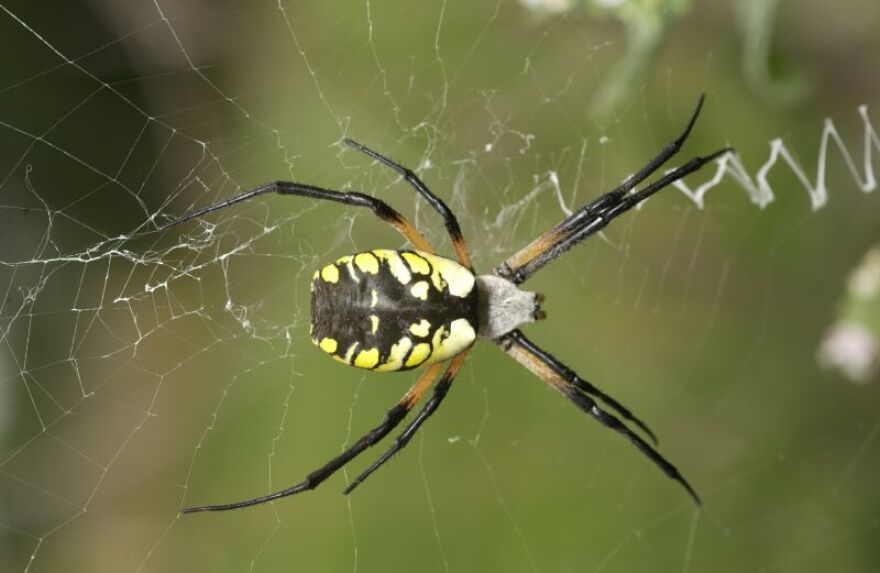Discover Nature this week with garden spiders in Missouri. It’s a shame that Little Miss Muffet was too frightened to meet the spider that sat down beside her. She would have discovered that spiders are exceptional creatures.
Black-and-yellow garden spiders are easy to find. They are common in gardens, fields, and urban backyards. A black-and-yellow garden spider is adorned with yellow-orange markings on its black body. This spider is large, with fully-grown females reaching an inch or more in length. Males resemble females but are only half as large.
Perhaps the most interesting thing about a garden spider is its beautiful web. Webs are circular and often more than two feet in diameter. Silken threads run spirally from the center of the web, where the spider weaves a zigzag band. The spider rests, head down, in the center of the web and waits for unsuspecting prey. Garden spiders eat a variety of insects, including grasshoppers and katydids.
Garden spiders are harmless and fun to watch. They are superb architects and play an important part in controlling insect populations. So, the next time you see a spider, don’t be frightened away. Instead, we recommend that you sit down beside it.
Learn more about Missouri’s garden spiders at MissouriConservation.org.



